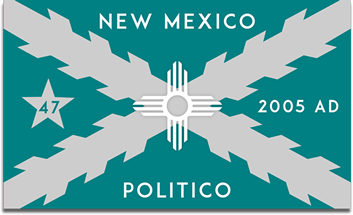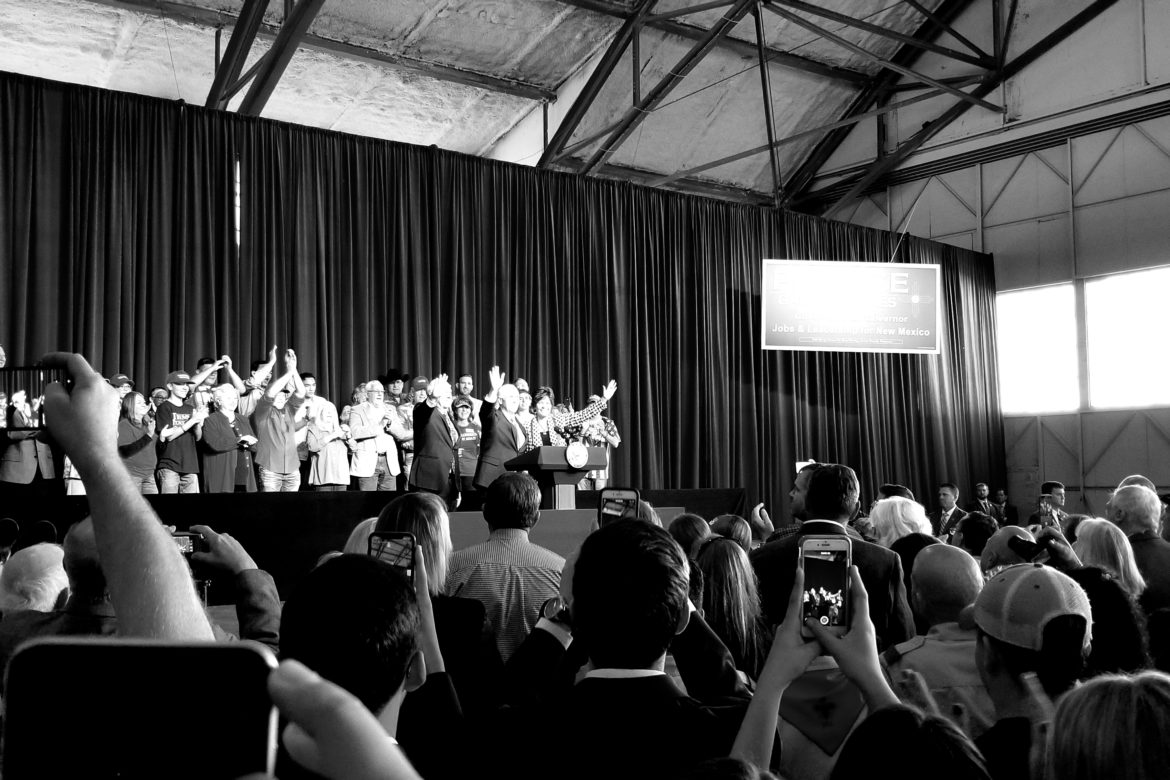The dust has barely settled on 2018 midterms in New Mexico, but already there are four key takeaways from Tuesday’s election results:
I. Voter Turnout Spike
Clearly voters in New Mexico were energized and motivated to turn out to the polls with a total turnout of 54.87 percent – which was only 7.49 percent shy of turnout from the Presidential election two years ago (nationally turnout hit a 50 year high). President Trump’s affect as a catalyst for voter enthusiasm was in play in addition to the overall nationalization and polarization of political issues. Democrats viewed this election as a referendum on President Trump.
Early voting was strong in New Mexico (up 30 percent from 2010) which was similar to the national trend. Young and new voters surged nationally, a trend that can be expected to have been replicated in New Mexico once more data is available. “Voters under the age of 30, relative to their ’14 turnout, are outperforming every other group,” Tom Bonier, a Democratic strategist for the data firm TargetSmart, told the Hill. Historically the youth vote was not overwhelmingly Democratic, but that has started to change since the mid-2000s:
The youth vote over time, per the exit polls. (h/t @rachelhoff814) pic.twitter.com/sWbJKKgODc
— Kristen Soltis Anderson (@KSoltisAnderson) November 7, 2018
II. Suburban / Rural Split & the Trump Effect
Across the country, voters in suburban areas continue to trend away from Republicans and based on the results from Tuesday New Mexico is no exception. In Bernalillo County, Republicans suffered numerous legislative losses in areas once considered safe GOP districts. Michelle Lujan Grisham destroyed Pearce 62 to 38 percent in Bernalillo and the impact was felt down ballot. Part of this shift can be attributed to women voters, of whom 59 percent backed Democrats running for Congress according to exit polls from CNN – the largest margin seen in midterm exit polls. While 56 percent of noncollege-educated white women supported Republicans, 73 percent of Latino women supported Democrats.
Dan Sena, the executive director of the Democratic Congressional Campaign Committee (a Santa Fe native tapped for the job by DCCC chair Ben Ray Luján) told Roll Call yesterday:
“One of the key pieces that we have learned over the last two years of watching Trump and studying Trump is there is an opposite and equal reaction across the country whenever he does something. We call it shaking the snow globe. There was an opposite reaction in highly suburban areas. We were there to maximize on it.”
In other words, Trump’s rhetoric and style resonate with rural, working-class voters while wealthier college-educated suburbanites are turned off by the same behavior. This dynamic is amplified with the issues Trump highlights in his messaging. His singular focus and harsh rhetoric around immigration for example plays well with his base of rural voters but is detrimental to winning over women and minority voters, particularly in suburban districts.
How long Democrats can hold onto their control of suburban districts remains to be seen, especially when the inevitable day comes that Trump is no longer in office and can no longer be used as an effective foil. Noticeably a number of Republican losses in campaigns for the Roundhouse were in districts lost by roughly 500 votes or less, a margin of victory small enough to be managed by a well-organized and targeted GOTV operation.
III. Republican GOTV
Speaking of GOTV, I made a prediction in a piece after the Primary Election that “unless the New Mexico GOP spends some time and resources on GOTV, the results in November could get ugly.” Obviously, the NM GOP was going into the midterm elections with historical headwinds that would be difficult to overcome, but this situation was made even worse by the lackluster (some would say non-existent) GOTV operation by the state Republican Party. Comparably, the Democratic GOTV operation was well run, better funded, and up and running months before the NM GOP had anything operational that could be recognized as a GOTV operation.
In NM CD-2, the problem was compounded by a Doña Ana County Republican Party that was a shell of its past self, when Governor Martinez ran in 2010 and 2014 and there was a fully staffed phone bank and door to door operation. Yvette Herrell’s loss by around 2700 votes (as of the most recent count this morning) could well have been prevented if a more robust county party operation was able to minimize the winning margin Torres Small posted in Doña Ana (64.24 percent to 35.76 percent), a blowout margin that ultimately sealed Herrell’s fate.
IV. Messaging Matters
In the fall of 2007, Pearce announced he would run for the Republican nomination to replace Domenici in the U.S. Senate, and after winning the nomination in a bitter primary against Heather Wilson, Pearce would go on to lose to Tom Udall 61 to 39 percent. It was as clear to me then as it is now that Congressman Pearce would struggle to be a viable statewide candidate simply because the conservative credentials that served him well in CD-2 would likely be a liability in a state known for electing moderate Republicans.
But I saw glimpses of a candidate with statewide appeal. In a 2013 interview, in pointing out how the GOP should “improve its dismal standing with Hispanic voters”, Pearce told the Wall Street Journal:
“You just have to show up, all the time, everywhere,” he said, during a recent barnstorm tour of his district, which sprawls across the southern half of this border state. “Most Republicans don’t bother. I do. I bother.”
The piece goes on to mention that Pearce “nabbed around 42% of the Hispanic vote, or nearly twice what Mitt Romney received nationally, and better than Republican Susana Martinez’s share when she won the New Mexico governor’s race in 2010, according to various polls.”
As many will tell you, there is no question Pearce “showed up” in his campaign for governor and was constantly meeting voters from one end of the state to the other. But in a statewide race, it is simply not feasible to directly emulate his CD-2 winning formula. The sheer size of the state and the nature of a governor’s race require engaging Hispanics with a marketing approach that directly engages them with the messaging that made him so endeared in Southern New Mexico. I saw little evidence of the grassroots engagement, messaging, and narrative building needed to win (though I did see one mention in the Albuquerque Journal about an obscure group called Hispanics for Pearce that was used to counter a bogus claim that Pearce was “out of touch” and was never heard from again). The Pearce campaign’s commercials were well produced but failed to promote the man that could count on the support of lifelong Democrats – who had no problem voting for Pearce and Obama on the same ballot – and gave little resistance to the predictable efforts by the Michelle Lujan Grisham campaign to brand him as a Trump loyalist.
When Yvette Herrell won a heated primary by wholeheartedly embracing Trump, I was concerned her move to the far right ignored the carefully crafted brand Pearce had forged over the years as a Congressman from a border district. As you can tell from the graphic below, voters were so unimpressed that Herrell managed to win conservative districts in CD-2 by considerably less margins than President Trump two years earlier:
#NM02, in southern New Mexico, was an open R-held seat that Democrats flipped with @XochforCongress. Trump carried it by 10%. About 1/3 of the votes were from Doña Ana County (Las Cruces) which gave Small 64% up from HRC’s 54%. Lighter shades of rural red this year, too. #nmpol pic.twitter.com/Bwz6nJ6d2m
— J. Miles Coleman (@JMilesColeman) November 8, 2018
Herrell’s positioning left her no room for growth with moderates and independents. Evidently, for Republicans to win in CD-2, or New Mexico for that matter (a majority minority state), it takes a certain kind of candidate that is willing to support economic growth and opportunity while standing up against some of the divisive rhetoric coming out of Washington.

